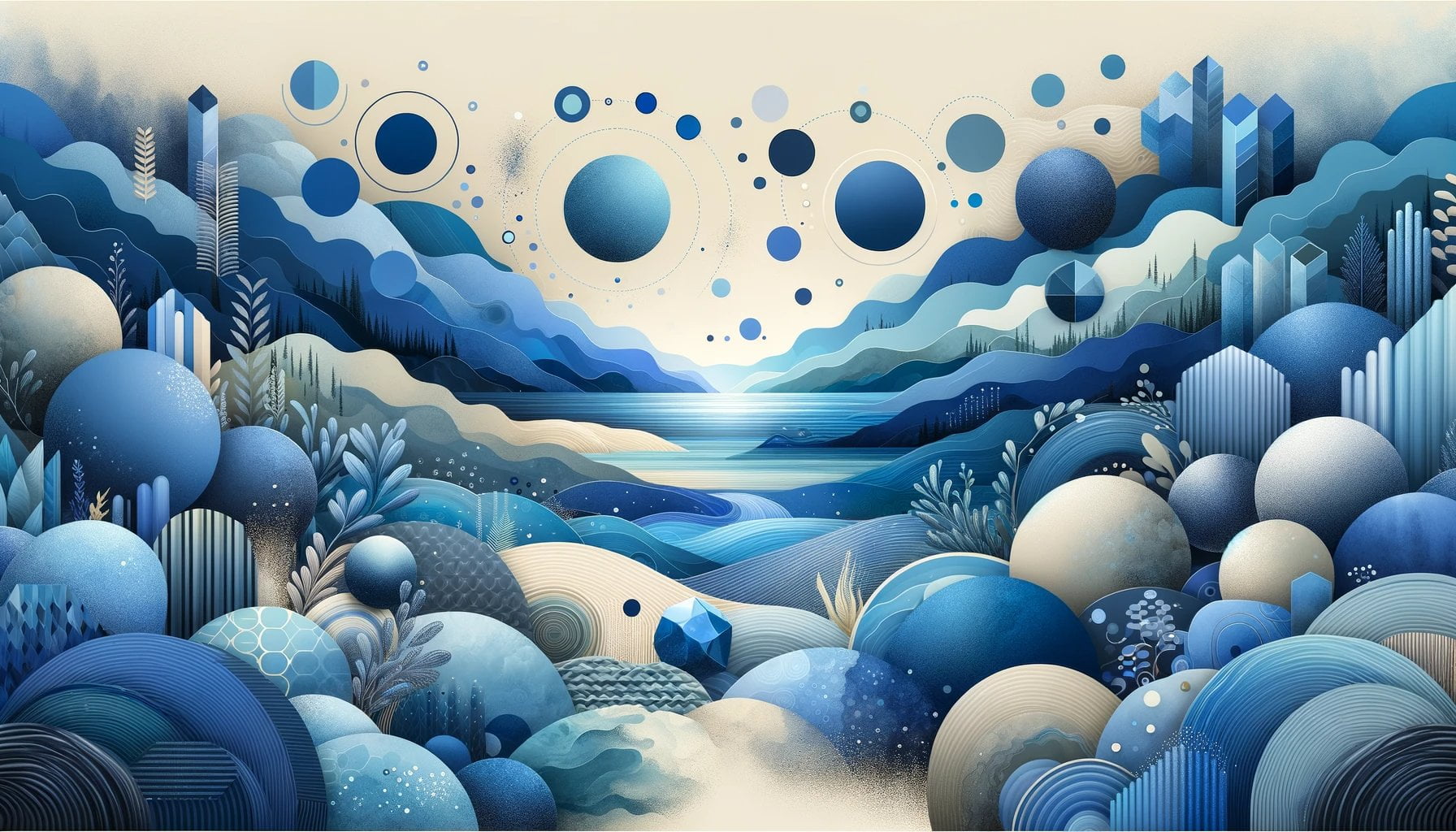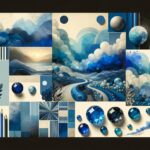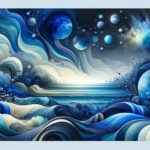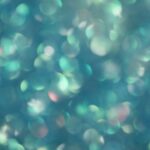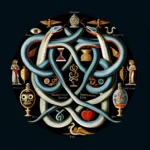If you’ve ever found yourself mesmerized by the serene beauty of the color blue, you’re certainly not alone. From its calming effect on the mind to its vibrant cultural symbolism, blue has captivated humanity for centuries. In this article, we’ll dive deep into the fascinating world of the color blue and uncover a treasure trove of fun facts that you may not have known before. So, get ready to immerse yourself in the captivating allure of blue as we explore its rich history, psychological impact, and cultural significance. Fascinating fun facts about the captivating color blue await!
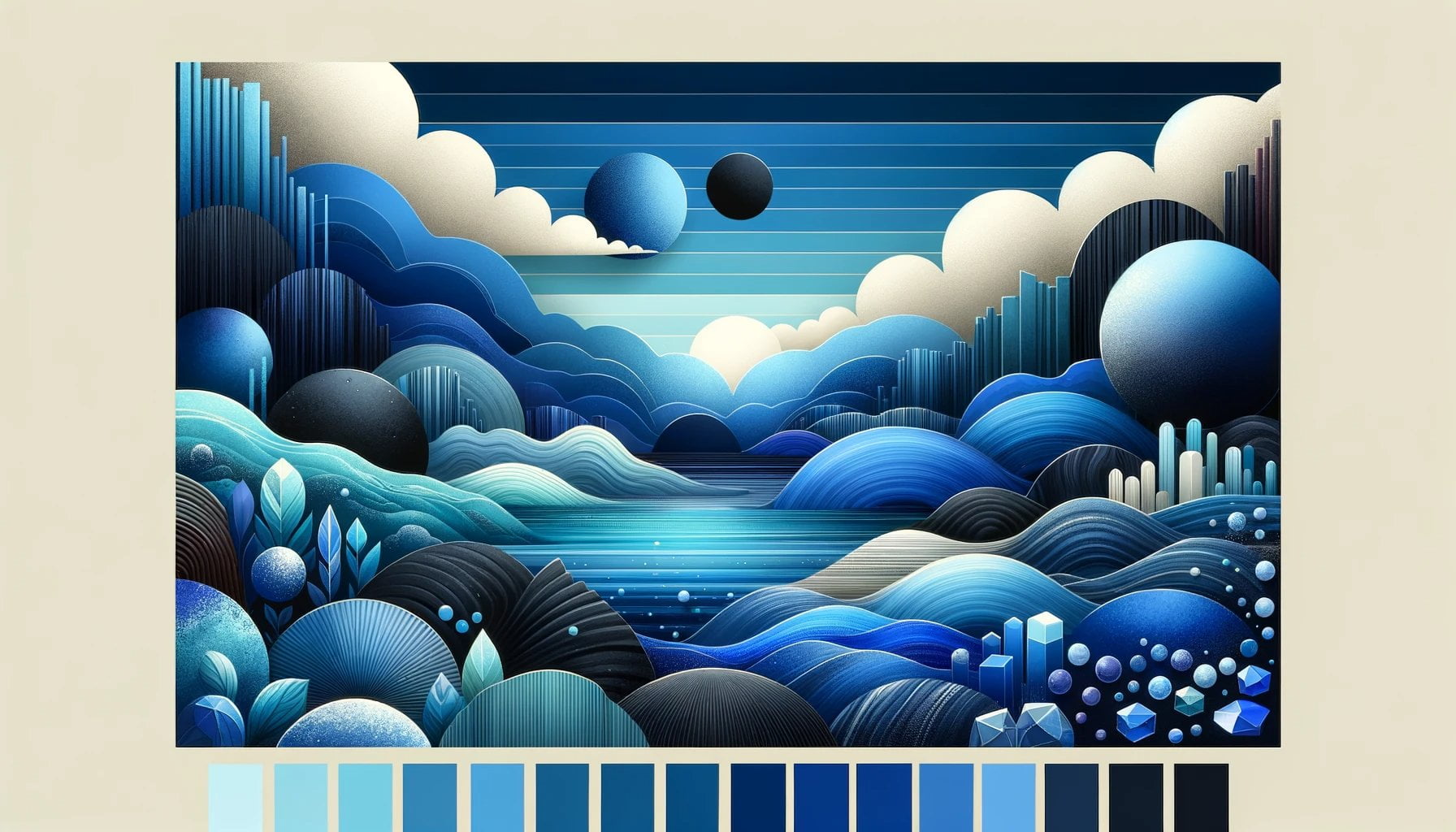
Key Takeaways:
- Blue was the last color to be coined as a term in the English language.
- Blue flowers are created through genetic modification and breeding, as blue is infrequent in nature.
- The idea of blue being associated with boys began after World War II.
- The pigment Prussian blue is used to create perfect copies of drawings.
- Blue is considered the world’s favorite color, based on surveys.
- Blue is the rarest color in nature, particularly among animals and plants.
- Blue holds different cultural meanings and associations worldwide.
What are fun facts about the color blue?
Blue is a captivating color that has fascinated humans for centuries. From its elusive presence in nature to its symbolic meaning in different cultures, there are numerous intriguing fun facts about this alluring hue.
The Last Color in English Language
Did you know that blue was the last color to be coined as a term in the English language? While other colors like red, yellow, and green had names in English for centuries, it wasn’t until around the 13th century that the word “blue” was introduced. This delay in recognizing blue as a distinct color reflects the scarcity of naturally occurring blue objects and the challenges faced by early civilizations in differentiating it from other shades.
Uncommon in Nature
One interesting fact about the color blue is that it is relatively uncommon in nature. When we look around, we see an abundance of green foliage, brown earth, and colorful flowers. However, pure blue pigments are not naturally found in many plants, animals, or minerals. Blue flowers, for example, are mostly created through genetic modification and selective breeding. So, the next time you come across a blue flower, appreciate its rarity!
Boys in Blue
Have you ever wondered why blue is often associated with boys? The idea of blue as the color for boys actually emerged after World War II. Before that, it was common to dress boys in pink, which was considered a more delicate and suitable color for boys. However, as the post-war era brought about changes in societal norms, blue became the preferred choice for boys’ clothing. This shift in perception eventually led to the blue-pink color divide we know today.
Prussian Blue’s Magic
Art enthusiasts will be fascinated to learn about the magic of Prussian blue. This pigment, derived from a special chemical compound, has an incredible ability to create perfect copies of drawings. When a sheet of paper with a design in iron ink is layered with another sheet covered in Prussian blue, the pressure applied causes the blue to react with the iron ink, resulting in an exact replica of the original drawing. This astonishing phenomenon has been used for centuries in art reproduction.
The World’s Favorite Color
According to various surveys, blue consistently ranks as the world’s favorite color. It is a color often associated with calmness, stability, and tranquility. People are drawn to its soothing and serene qualities, making it a popular choice in interior design, branding, and even personal preferences. Whether it’s the vast blue sky or the serene blue ocean, this hue resonates with people across cultures and continents.
The Rarity of Blue in Nature
When it comes to animals and plants, blue is the rarest color. You may notice that very few animals or plants exhibit a vibrant blue hue naturally. Most blue-colored organisms have developed this color through special pigments or structural adaptations rather than inherently possessing blue pigments. From the dazzling blue morpho butterfly to the striking blue whale, encountering a naturally blue creature in the wild is a rare and extraordinary experience.
Cultural Meanings and Associations
Blue has different meanings and associations around the world. In Western cultures, it is often associated with trust, loyalty, and conservatism. In contrast, some Eastern cultures associate blue with immortality, spirituality, and protection from evil spirits. Blue is also linked to emotions like sadness and melancholy in certain contexts, thanks to phrases like “feeling blue.” Exploring the cultural significance of blue opens up a wealth of knowledge regarding the diverse interpretations and symbolism associated with this captivating color.
In conclusion, the color blue is not only visually appealing but also incredibly fascinating. From its late recognition in the English language to its scarcity in nature, these fun facts shed light on the distinctive qualities of this captivating color. Whether you appreciate the symbolism of different cultures or marvel at the mesmerizing blue wonders of the world, the color blue continues to captivate us with its beauty and intrigue.
Blue, the color of the sky and the ocean, holds a mystique that captivates our senses. Want to uncover some fascinating facts about the color blue? Just click here to discover its intriguing secrets.
Did you know that blue is one of the rarest colors in nature? Find out more about what makes the color blue so special by clicking here.
Curious about the wonders of colors? Explore a collection of intriguing facts, including fascinating information about the color blue, by clicking here.
The Psychological Effects of the Color Blue
Key Takeaways:
– Blue is a calming color that has a soothing effect on the body and mind.
– It reduces anxiety, lowers blood pressure, and decreases the heart rate.
– Blue evokes feelings of calmness, spirituality, security, and trust.
– The color blue is associated with logic, communication, and intelligence.
– It is viewed as non-threatening and often chosen as a favorite color.
When it comes to the color blue, its psychological effects are fascinating. The serene and tranquil nature of blue has the power to relax our minds and bodies. So, what exactly are the psychological effects of the color blue?
First and foremost, blue is renowned for its calming properties. Research has shown that when we see the color blue, our bodies release chemicals that promote a sense of calmness and relaxation. This makes blue the perfect color choice for spaces where stress levels need to be minimized, such as bedrooms or meditation rooms.
In addition to promoting relaxation, blue also evokes feelings of spirituality and security. Its association with vast open skies and endless oceans gives it an ethereal quality, inspiring a sense of awe and tranquility. Blue is often linked to trust and loyalty in Western cultures, making it a popular choice for branding and logo design.
Furthermore, blue is closely associated with logic, communication, and intelligence. This cognitive connection is evident in idiomatic expressions such as “out of the blue” or “feeling blue,” which highlight the color’s ability to symbolize unexpected events or emotions. The color blue is often used in academic settings to stimulate clear thinking and enhance productivity.
Interestingly, blue is the most favored color worldwide. Its non-threatening nature and calming effects contribute to its popularity. In fact, blue consistently ranks as the world’s favorite color, surpassing other hues in terms of preference. This widespread appreciation for blue further emphasizes its positive psychological impact.
While blue is generally regarded as a color of serenity, it’s essential to note that it can also convey emotional distance and indifference. In certain contexts, blue can be associated with a lack of warmth and even sadness or melancholy. Understanding these varied associations allows for a deeper understanding of how colors can influence our mood and perception.
In conclusion, the psychological effects of the color blue are undeniable. From its ability to induce relaxation and promote feelings of spirituality and security to its association with logic and intelligence, blue is a truly captivating hue. Whether you’re surrounded by blue in nature, art, or your everyday environment, its impact on our mental and emotional well-being cannot be overlooked.
Citation:
– Slightly Blue, “Why Does the Color Blue Calm the Mind?” ^1
– Colour Affects, “Psychological Properties Of Colors” ^2
Notable Blue-colored Natural Phenomena
Blue is a captivating color that has fascinated humans for centuries. From its cultural significance to its psychological impact, blue holds a special place in our hearts and minds. But did you know that there are also notable natural phenomena that showcase the breathtaking beauty of the color blue? Let’s explore some of these remarkable occurrences and delve into the wonders of the natural world.
1. The Blue Lava of Kawah Ijen Volcano
Located in Indonesia, the Kawah Ijen volcano is home to a mesmerizing natural phenomenon – blue lava. Unlike the familiar red and orange lava, the sulfuric gases emitted by this volcano react with the air to create an otherworldly blue glow. This magical spectacle is a result of the combustion of sulfuric gases, which burn with an intense blue flame. Witnessing this incredible sight, you can’t help but be captivated by the ethereal beauty of the blue lava.
2. The Blue Grotto of Capri
Nestled in the mesmerizing island of Capri, Italy, the Blue Grotto is a natural marvel that showcases the enchanting power of shades of blue. The grotto’s sea cave system creates a mesmerizing effect as sunlight enters through an underwater cavity, illuminating the water in a brilliant blue hue. The reflection of the light on the white sandy bottom gives the water an otherworldly luminosity. Exploring the Blue Grotto is like stepping into a magical blue realm, leaving you in awe of nature’s artistic prowess.
3. The Blue Holes of Belize
The Blue Holes of Belize are not only a diver’s paradise but also a sight to behold for their captivating blue color. These underwater sinkholes, formed during the Ice Age, boast crystal-clear turquoise waters that extend deep into the ocean depths. The deep blue hue creates a striking contrast with the surrounding coral reefs, making the Blue Holes a top destination for divers seeking a surreal underwater experience. Swimming in the brilliant blue waters, you can’t help but feel a sense of wonder and admiration for the beauty of the natural world.
4. Blue Icebergs in Antarctica
Antarctica, known for its icy landscapes, also offers a stunning display of blue-colored natural phenomena. Blue icebergs, formed by compacted ice that has absorbed little to no air, appear in vibrant shades of blue due to the way they scatter light. These magnificent ice structures reflect and refract sunlight, creating a spectrum of blue tones that range from pale turquoise to deep sapphire. Standing in the presence of these majestic blue icebergs, you can’t help but be reminded of the immense power and beauty of nature.
5. The Blue Pond of Hokkaido
Located in Japan’s Hokkaido region, the Blue Pond is a hidden gem that enchants visitors with its serene blue waters. The pond’s vivid blue hue is the result of natural minerals dissolved in the water, such as aluminum hydroxide. The unique combination of minerals and the reflection of surrounding trees creates a dreamlike atmosphere, as if you’ve stumbled upon a mystical realm. The Blue Pond is a tranquil spot that allows you to immerse yourself in the calming allure of the color blue.
Key Takeaways:
- The Kawah Ijen volcano in Indonesia produces mesmerizing blue lava, creating a unique and captivating natural phenomenon.
- The Blue Grotto of Capri in Italy showcases the stunning beauty of shades of blue, as sunlight filters through an underwater cavity.
- The Blue Holes of Belize offer divers a surreal experience with their crystal-clear turquoise waters, contrasting against the surrounding coral reefs.
- Antarctic blue icebergs, formed from compacted ice, display a diverse range of blue shades due to the scattering of light.
- The Blue Pond in Hokkaido, Japan, captivates with its serene blue waters, created by natural minerals dissolved in the water.
Blue in Art and Design: From Paintings to Branding
The color blue holds a fascinating journey in the realm of art and design. From its origins in Ancient Egypt to its symbolism in various cultures, blue has captivated artists and designers throughout history. In this article, we will explore the rich history and significance of blue in art, as well as its role in branding.
History of Blue in Art
Blue’s artistic journey began around 2200 BCE in Ancient Egypt. The Egyptians, seeking a permanent pigment, invented Egyptian blue, the world’s first synthetic color. This breakthrough coincided with the construction of the Great Pyramids and opened up new possibilities for artists, leaving a lasting impact on the art world.
Blue Color Meaning
Blue carries a wide range of meanings and associations. Initially, due to the rarity of natural lapis lazuli, early adopters turned to chemistry to create blue pigments. Historically, blue has been associated with royalty and divinity, symbolizing power and authority. It also represents calmness, tranquility, and peace. These soothing qualities make blue a popular color choice in relaxation rooms.
Blue Pigments Used in Art
Since the discovery of blue pigments by the ancient Egyptians, scientists and chemists have continued to develop different shades of blue. Some notable blue pigments include Egyptian blue, ultramarine, indigo, Prussian blue, and International Klein Blue. Artists throughout history have utilized these pigments to create stunning works of art that evoke emotions and make powerful statements.
The Role of Blue in Art
Blue is often used in art to portray expansiveness and evoke a sense of vastness. It captures the beauty of the sky and its reflection on water surfaces, creating a feeling of space and tranquility. Renowned artists like Pablo Picasso, Wassily Kandinsky, and Yves Klein have embraced blue as a primary color in their works, using it to convey a range of emotions and ideas.
The Significance of Blue in Art History
The use of blue in art not only portrays the evolution of pigments and artistic techniques but also reflects the social histories of different cultures. Blue has played a vital role in the artistic expression of various civilizations, showcasing human ingenuity, innovation, and cultural significance. Today, blue continues to inspire artists, bridging the gap between the past and the present.
Sources:
- Artsy: The 6,000-Year History of Blue Pigments in Art
- Art UK: Colour in art: a brief history of blue pigment
Key Takeaways:
- Blue has a rich history in art, dating back to Ancient Egypt where the first synthetic color, Egyptian blue, was invented.
- The color blue has various meanings and associations, representing royalty, divinity, calmness, tranquility, and peace.
- Artists have utilized blue pigments like Egyptian blue, ultramarine, indigo, Prussian blue, and International Klein Blue to create stunning artworks.
- Blue is often used in art to convey a sense of expansiveness, evoking feelings of space and tranquility.
- The use of blue in art reflects the evolution of pigments, artistic techniques, and the cultural significance of different civilizations.
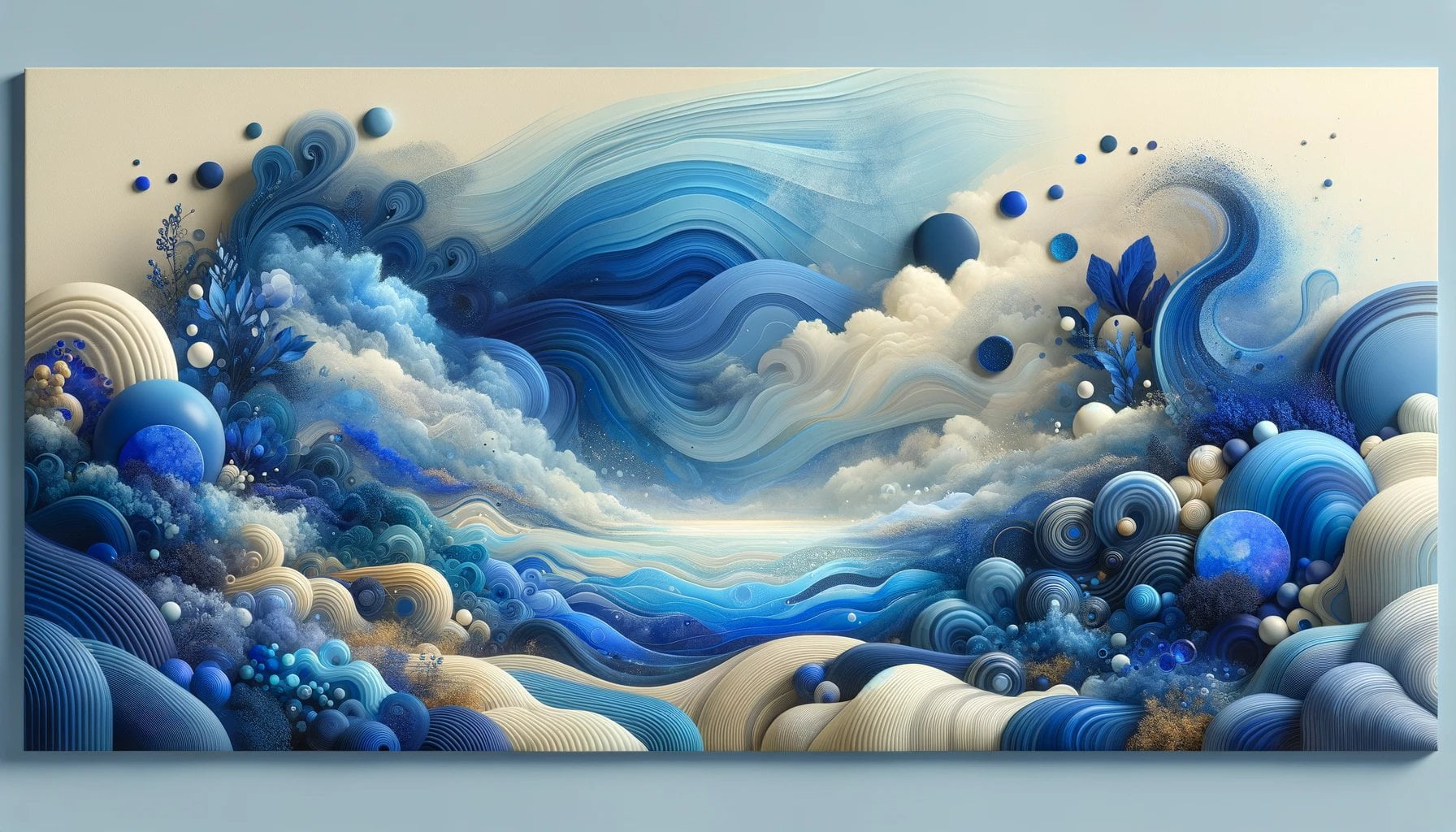
FAQ
Q1: What are some interesting fun facts about the color blue?
A1: Blue is the world’s favorite color and is associated with feelings of calmness and tranquility. It is also the rarest color in nature, with very few naturally occurring blue things. Blue has different cultural meanings and associations around the world, and there is a common association between blue food and being poisonous.
Q2: Why is blue the world’s favorite color?
A2: Blue is the world’s favorite color because it is widely loved and appreciated throughout the year. Despite its association with feeling low and miserable in January, blue evokes feelings of calmness, spirituality, security, and trust, making it a non-threatening and soothing color.
Q3: What is the significance of the color blue in art history?
A3: Blue has a rich history and significant meaning in the world of art. It was first created in Ancient Egypt and had a lasting impact on the art world. Blue represents expansiveness and is often used to portray the beauty of nature, eliciting feelings of peace and tranquility. Many renowned artists have used blue as a primary color in their works.
Q4: What are some notable blue pigments used in art?
A4: Some notable blue pigments used in art include Egyptian blue, ultramarine, indigo, Prussian blue, and International Klein Blue. These pigments have been used by artists throughout history to create stunning works of art.
Q5: How does the color blue affect our mental and physical well-being?
A5: The color blue has a soothing effect on the body and mind. It decreases the heart rate, lowers blood pressure, and reduces anxiety. Blue evokes feelings of calmness, comfort, and relaxation. It is also associated with logic, communication, and intelligence. Additionally, blue is often linked with low stress, low temperature, and low pulse rate.
- China II Review: Delicious Food & Speedy Service - April 17, 2025
- Understand Virginia’s Flag: History & Debate - April 17, 2025
- Explore Long Island’s Map: Unique Regions & Insights - April 17, 2025
